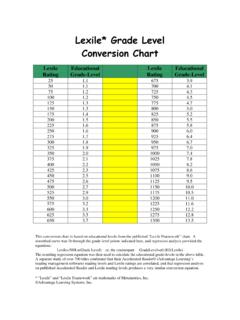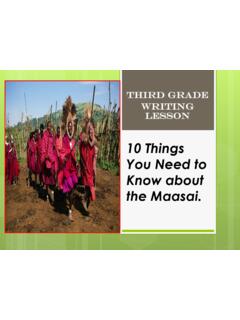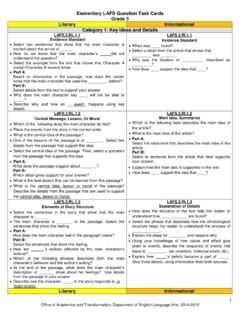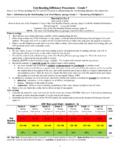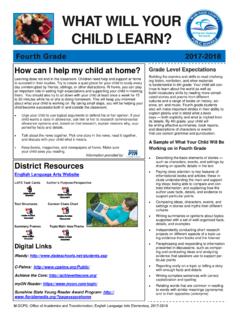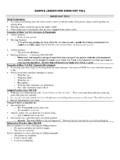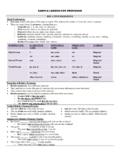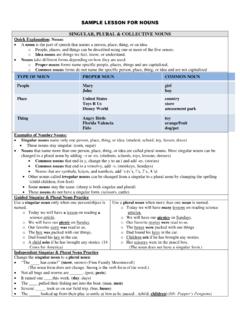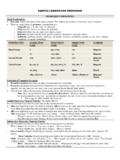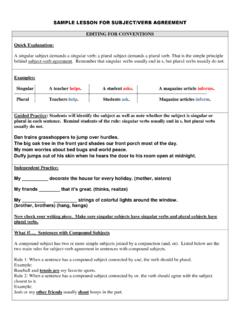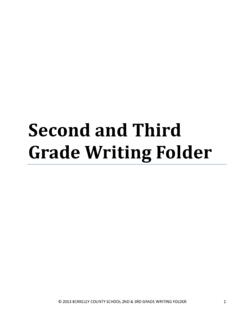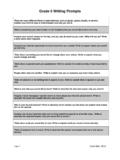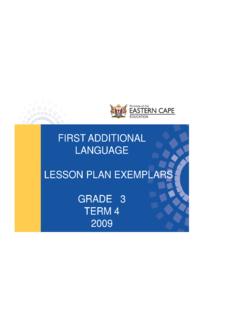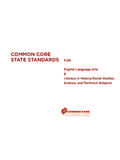Transcription of FIRST GRADE TEACHERS WRITING - English Language Arts …
1 MIAMI- DADE COUNTY PUBLIC SCHOOLS. DIVISION OF Language ARTS/READING. FIRST GRADE TEACHERS WRITING FIRST GRADE Table of Contents I. CCSS Day 2 Participants PowerPoint II. Activities Handouts A. Activity: Explore the CCSS WRITING a. CCSS at a glance b. Explore the CCSS for WRITING Content frame c. Primary WRITING Rubric with exemplar papers III. Best Practices for Teaching WRITING A. Conferring with young Writers B. Format of Writer's Workshop a. T A G b. Compliments c. 5 Magic Rules for Listening C. Characteristics of Genres D.
2 Target Skills for FIRST GRADE Students a. Detail Attributes Chart IV. Pacing Your Instruction A. WRITING Year at a Glance B. District WRITING Pacing Guide /Week 5 C. Rigorous Lesson GRADE 1 Planner for WRITING V. Activity Let's Get This Party Started! A. Two Colum Notes on What DO I Want to Know /What Have I Learned B. Animal Picture Cards C. 1st GRADE research on weird animals GRADE 1 WRITING Transitioning GRADE 1. to CCSS. D 2. Day So what does the CCSS say b t WRITING ? about Before we delve into WRITING .. Lett's talk L t lk about b t what h t we k know about WRITING instruction!
3 Let's Explore p The Common Core! Strands Components Correlation Things that How will it within the make you go impact your WRITING Process HUM!?! instruction? WRITING Text Types & Purposes Production & Distribution of WRITING Research to Build &. Present Knowledge Language Conventions Vocabulary Print Concepts Speaking S ki & Comprehension C h i &. Listening Collaboration Presentation of Knowledge & Ideas Let's Do A Little Backmapping! G d 2. GRADE G d 1. GRADE Ki d Kindergarten t Text Types and Purposes W 2 3. W13.
4 WK3. Write narratives in Write narratives in Use a combination of which they recount a which they recount two drawing, dictating, and well-elaborated event or or more appropriately WRITING to narrate a short sequence of sequenced events, single event or several events include details to include some details events, loosely linked events, events describe actions, regarding what tell about the events in thoughts g and feelings, g happened, pp use temporal p the order in which they y use temporal words to words to signal event occurred, and provide a signal event order and order, and provide some reaction to what provide a sense of sense of closure.
5 Happened. closure. How do we Assess Primary WRITING ? Annotation The writer of this piece names the topic (in the title). My Big Book About Spain upp supplies some m facts f aboutu the topic. p . Spain is loacted in the south western tip of Europe Spain has a lot of fiestas. Spain .. has bull fights.. Spain Spain'ss neighbors are France France, Andorra, Algeria, Portugal and Morocco. provides some sense of closure. One day y when I am a researcher I. am going to go to Spain and write about it! demonstrates command of some of the conventions of standard written English .
6 English This piece illustrates the writer's awareness of beginning-of- sentence capitalization and end- of-sentence punctuation as well as the h use off capitall letters l for f proper nouns. Annotation The writer of this piece establishes the situation with the opening sentence. I went to biye a hamster .. recount two or more appropriately sequenced events. I got a. Very nerves hamster..then at nite when my. Dad came home includes some detail regarding includes what happened. I was so excited I woted to run. Al the waye there.
7 Uses temporal words to signal order(though d ( h h the h writer i does d not consistently include them). Then at nite whey my. Dad came hone he sedi was is that. Noys.. provides some sense of closure. I Did't wont to ratern her. Because she was so soft and cuddley. She felt lik a little cotton ball. ball What Research Says About Primary WRITING Teaching the Youngest Writers by y Marcia Freeman m If we start in the earliest grades, teach print principles, expository and narrative WRITING -craft techniques, composing and convention skills and provide lots of practice, we can help children become better writers.)
8 We have W h v learned l rn d empirically mpiric ll th thatt childr children n who h apply ppl their th ir emerging m r in phonetic skills to their WRITING learn to read earlier than children who do not. We have discovered empirically that children's spelling evolves p from experimental and temporary p y spelling p g to conventional. We know that h children hild revise i and d edit di as a naturall result l of f sharing h i and d publishing. bli hi When children from these successful WRITING classrooms enter third GRADE , their TEACHERS are astounded by their use and knowledge of the WRITING Process: Where shall we meet for Author's chair?
9 ;. I need a peer conference;. W. Will ll you read my piece p ece for specificity?;. spec f c ty?;. Knowledge of genre: Kelly's narrative has no focus;. That's a nice hook;. Look how I used a simile. Best Practices for Teaching WRITING 1. Create an inviting classroom. 2 Establish WRITING Workshop routines that meet 2. everyday. What writers KNOW. Writer'ss Craft Techniques using the 3. Teach Writer What writers DO. WRITING Process and students' developmental WRITING needs. needs 4. Provide opportunities for authentic WRITING .
10 5. Provide diverse reading materials modeling the importance of craft and ideas. ideas (Mentor Texts). Texts). Best Practices . 6. Make teacher and peer response an integral part of p f WRITING g instruction,, intermittently y throughout the WRITING process. 7. Use many techniques for responding including student / teacher conferences, peer conferences and author's chair. p 8. Students should revise after responses/conferring p g HOWEVER . The Best of the Best . Conduct effective WRITING mini-lessons on a targeted craft or skill by structuring it so that students may: Observe e e Discuss Simulate Writer's Craft are the skills and t h i techniques th thatt writers it know k and d use to make their writingg clear and interesting.
